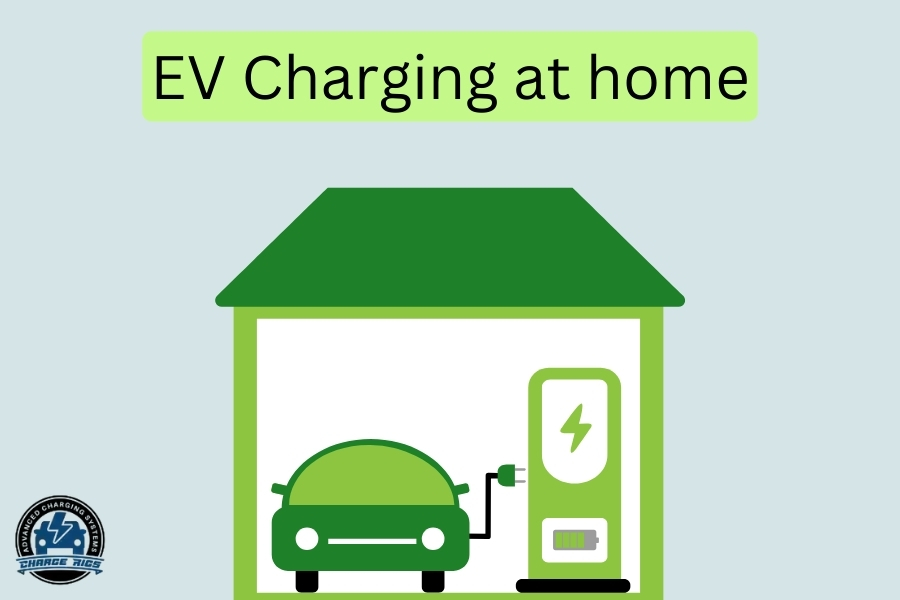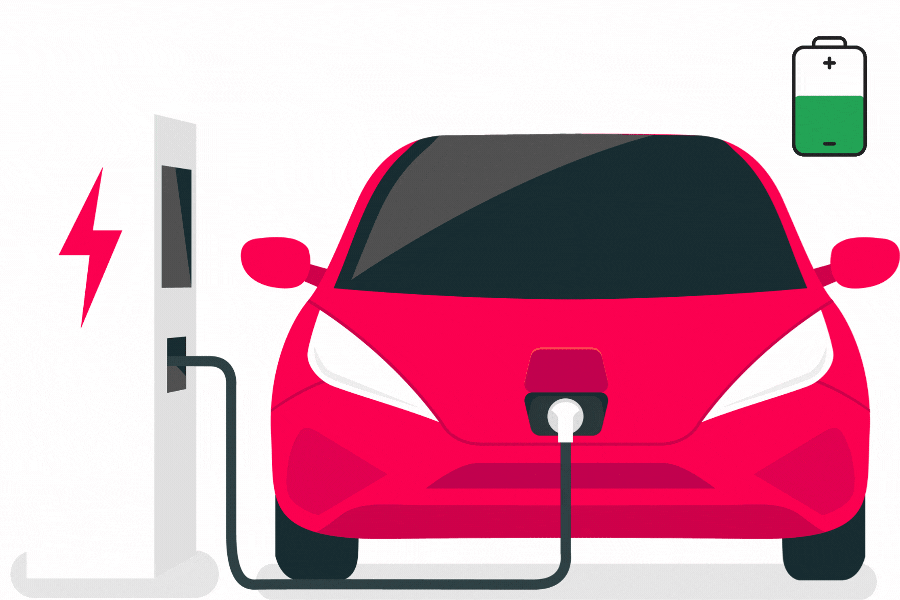A question emerges as numerous people shift from combustion engine cars to electric vehicle options: how does EV charging work? How can you drive and charge an electric vehicle? Charging an EV is not as easy as fueling a car at a gas station.
You need to know where to charge it, which cable to use, how to pay for the service, how long to charge, etc. Check this comprehensive guide if you are looking for practical answers to various EV charging questions. It discusses the crucial things to know about the EV charging process.
Crucial Things to Note on Charging Levels
How does EV charging work? Before we answer this question, do you understand the three charging levels? Each charging level determines the power output you can get and how quickly you can recharge your car. How do EV charging stations work? Here is an explanation of the three charging levels:
Level 1 – How does EV charging work at level 1?
This charging level is the slowest available. It is about charging your electric car directly from a standard power outlet. You will use the cable your EV came with, which can deliver about 2.3kW. A Level 1 AC can recharge around six to eight kilometers range per hour. Thus, leave the car plugged in for around 25 hours to get enough charge to cover 160 kilometers. Level 1 charging is slow and inconvenient for most people. It can be dangerous. The plugged-in cable cannot protect your assets and home if a power surge happens. It is not a wonder that these types of EV chargers are risky.
Level 2 – How does EV charging work at level 2?
Unlike level 1 AC charging, the level 2 option uses a dedicated station. This charging station type connects to an electrical circuit in the building. Therefore, it draws a high voltage power (7.4 to 22 kilowatts) to charge a vehicle fairly quickly. Since it connects an electric meter with a circuit breaker, it can withstand a sudden power surge better than any level 1 charger. Level 2 charging stations can be at a public place or home. Compared to level 1 chargers, the level 2 charging station can recharge an EV five to fifteen times faster. Hence, the level 2 charger’s output is about forty to one hundred and twenty kilometers per hour.
Level 3 – How does EV charging work with a level 3 charger?
The level 3 or DC fast charging is the third most popular charger. This charging system works only with direct current. It delivers direct current into a battery, while level 1 and 2 chargers feed AC into an onboard converter in the car. Then, the converter turns the AC into direct current for storage in the battery. As the level 3 charger bypasses the AC to DC conversion, it is faster. Most DC fast chargers are in public places where the electrical supply can provide higher power loads than any home socket. DC fast charging stations produce a power output range of 50 to 350 kilowatts. Thus, the 350kW charger can recharge your EV in fifteen to thirty minutes depending on its unique charging capability.
How Does EV Charging Work? – Learn to Charge at Home and Public Places
Charging at home
Home charging is the easiest option because you do not necessarily need a dedicated EV charger installation. If you have a level 1 charging system, you will plug the car directly into a standard power socket.

The method uses the manufacturer’s cable you got when you bought the car. That is why it is slow and also prone to power surges. Even after charging your EV for 24 hours with a level 1 charger, you might recharge the battery up to eighty percent. How does EV charging work when using the level 2 option?
Level 2 charging uses a dedicated charging station, wired directly into the home’s electrical circuit. This allows it to handle a higher power load than a standard level 1 charger. The dedicated charging station can recharge your EV in three to seven hours.
You can plug it in after work and leave it overnight. Level 2 EV charging uses an inbuilt cable but you can use a separate one from your vehicle manufacturer. Insert this cable into the car’s socket on the side or front area.
Charging at a Work Environment
How does EV charging work at your workplace? If your organization offers an EV charging station that complies with your car specifications, you can recharge it there. Research shows that around thirty-four percent of EV motorists prefer this method to home charging.
This method is yet to become reliable because most workplaces have not installed EV chargers. Other organizations have not installed adequate stations for all workers. Many drivers would love to use this method, but their workplaces have the option.
Charging in the Public
How does EV charging work while far away from home? Public EV chargers are often the last resort for most drivers. Most use them when they are far away from home, office, gas station, or recreation facilities with paid EV chargers. Public EV chargers are usually of the level 3 kind and often appear in public places like free parking lots and garages.
Their roadside locations make them readily accessible and quick to use. Public EV charging stations help long-distance drivers more because they recharge battery charge in minutes. Public EV chargers are not free like home charging stations.
Locate a public charger operator and visit its website or app to register an account. Once you successfully create an account, the operator will automatically record your bill and send an invoice to pay.
A few public fast charging stations allow you to charge the EV on the go, allowing you to proceed with your journey. They only need your bank card. How does EV charging work on the go? Charging on the go is more expensive because the public charging stations are more convenient. Here is how public chargers work:
- Obtain a charging cable before visiting a public charging unit. Owners usually have a public charging cable that suits the location but might not always fit your EV.
- Plug the car into the public charger- Connect it to the charging port if it has the built-in style. Plug your cable into the public charger to start charging.
- Verify the Start Session – To send your payment, you should authenticate your session to the charging station. Use a dedicated phone app, bank card, key fob, or a keycard.
- Finish – Use your authentication method again to end the session. It will trigger the cable to unlock, which you should put back on the public EV charger or your auto.
Gas Stations and Shopping Malls
How does EV charging work at a shopping mall or gas station? Shoppers grab the opportunity to recharge their electric vehicles when they visit shopping malls and recreation facilities. Some motorists charge regularly at these facilities because they frequent them a lot.

Another option is the conventional gas station, where you fuel your combustion engine car. A few popular gas stations across the US have introduced fast chargers. If this is how you prefer to recharge your EV, go for it.
EV Charging Cables and Plugs
How does EV charging work with cables and plugs? EV charging is more complex than fueling a car at the gas station. With older combustion engine vehicles, you can fuel them at any gas station that sells the fuel type you like. On the other hand, you will require accurate charging cables and plugs from your car manufacturer.
These vary widely based on the EV manufacturer and where you live. Additionally, EVs use unique charging cables and plugs for DC fast charging and AC charge replenishment. Below is a summary of these cables and plugs:
- AC plugs – How does EV charging work with AC plugs? These are usually level 1 and 2 plugs, where the former are common in Japan and North America. AC plugs generate a maximum power output of 7.4 kilowatts. On the other hand, level 2 AC plugs are famous in the EU area and other countries globally. These three-phase chargers transmit more power than the typical level 1 charger. Delivering around 22 kilowatts, level 2 charging stations are faster.
- GB/T – This is a Chinese EV charging plug. The GB/T refers to Guobiao National Standards. This plug does not work with the Type 2 charger, even though they share an identical connector. The communication between the plug and the car is unique. How does EV charging work with GB/T? It can deliver a power output of around 43 kilowatts at a public charging place.
- DC Fast Charging Plugs – Many different EV charging connector types exist in many parts of the world. However, the most popular option is the Combined Charging System. The CCS 1 is for users in North America, and the CCS2 works for European motorists. CCSs use type 1 and 2 charging plugs and can release 350 kilowatts directly into your EV battery. We also have the CHAdeMo standard charging plug present in Japan. Lastly, you have the Tesla Supercharger charging plug. It is ideal for all North American Tesla EV models. This Supercharger can recharge non-Tesla vehicles only if you have an adapter.
Wrapping Up
How does EV charging work? This detailed guide has the most crucial information to learn. For instance, you can try EV charging at home, workplaces, gas stations, shopping malls, and recreation facilities. Bring your EV’s charging cable if you plan to charge in a public place. Follow easy steps to pay for the charging sessions and continue your journey.


